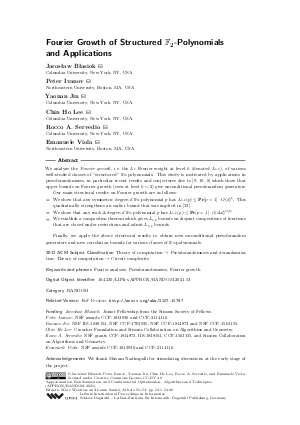LIPIcs.APPROX-RANDOM.2021.53.pdf
- Filesize: 0.82 MB
- 20 pages

 Creative Commons Attribution 4.0 International license
Creative Commons Attribution 4.0 International license







Feedback for Dagstuhl Publishing